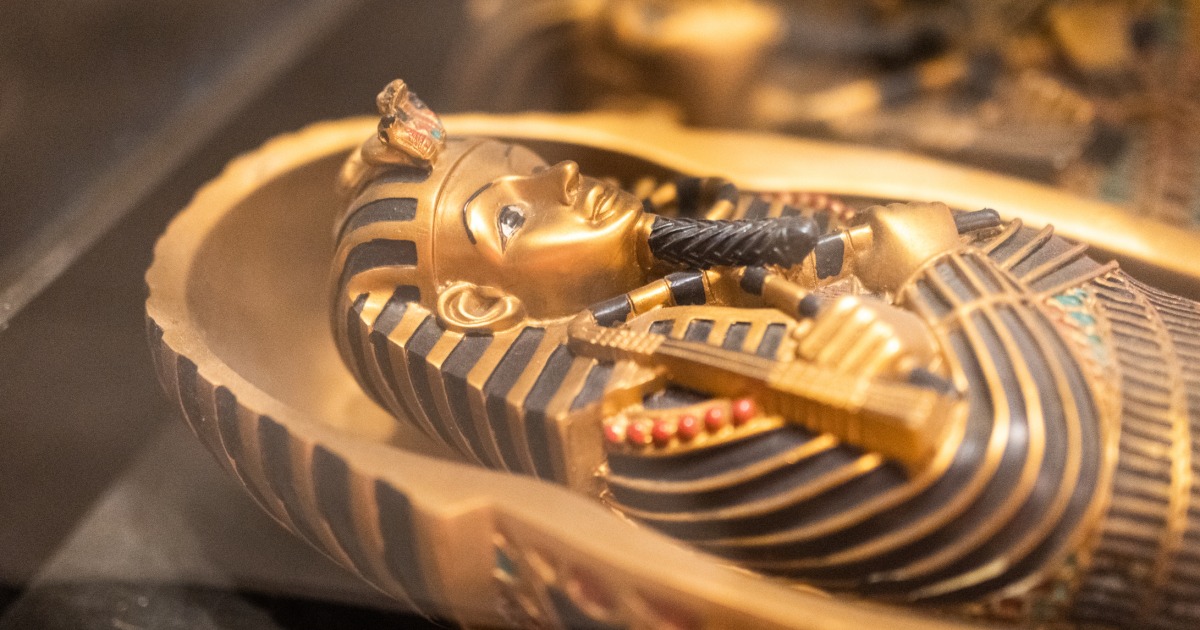By Maddie Burakoff -
The Associated Press
For thousands of years, the ancient Egyptians mummified their dead in search of eternal life.
Now, researchers have turned to chemistry and an unusual collection of jars to find out how they did it.
Their study, published Wednesday in the journal Nature, is based on a rare archaeological find: an embalming workshop with a treasure trove of pottery some 2,500 years old.
Many vessels found at the site still had inscriptions with instructions such as "wash" or "put on the head."
[Scientists reveal a new theory about the mysterious 'fairy circles' that arise in the Namibian desert]
By comparing the writing on the outside of the containers with the chemical remains inside, the researchers
discovered new details about the "recipes" that helped preserve the bodies for thousands of years.
"It's like a time machine, really," said Joann Fletcher, an archaeologist at York University who was not involved in the study.
"It's allowed us to see maybe not directly from the perspective of the old embalmers, but it's probably as close as we'll ever get."
Those recipes showed that embalmers
had a deep understanding of what substances would help preserve their dead
, said Fletcher, whose partner co-authored the study.
In addition, they included materials from remote parts of the world, which means that the Egyptians did everything possible to make their mummies "as perfect as possible."
NASA captures 'bear face' on Mars that offers clues to the surface of that planet
Jan 31, 202300:40
The workshop—discovered in 2016 by the study's author, Ramadan Hussein, who died last year—is located in the famous Saqqara cemetery.
Some parts are above the surface, but a shaft leads down to an embalming room and a subterranean burial chamber, where the jars were discovered.
[Scientists seek to 'humanize' pig livers to alleviate organ shortage]
It was in these rooms that the last phase of the process took place, explained Salima Ikram, an Egyptologist at the American University in Cairo who was not involved in the study.
After drying the bodies with salts, a process that probably took place on the surface, the embalmers took them underground.
“This was the last stage of his transformation, where the secret rites, the religious rites, were performed,”
Ikram said.
“People sang spells and hymns while they wrapped you and anointed your whole body with resin.”
The experts already had some clues about what substances were used in those final steps, mainly from the analysis of mummies and writings.
But many unknowns remained to be resolved, according to Philipp Stockhammer, an archaeologist at Germany's Ludwig Maximilian University and lead author of the research.
The new findings helped solve the case.
For example, the word "antiu," which appears in many Egyptian texts but did not have a direct translation, Stockhammer explained.
According to the new study, scientists found that several jars labeled "antiu" contained a mixture of different substances, including animal fat, cedar oil and juniper resin.
[What is the healthiest time to eat our meals, according to scientists?]
These substances, along with others found in the jars, have key properties that would help preserve the mummies, said Maxime Rageot, an archaeologist at the German University of Tübingen and lead author of the study.
Vegetable oils, which were used to protect the liver and treat bandages, would prevent the proliferation of bacteria and fungi and would improve the smell.
Hard materials, such as beeswax, used on the stomach and skin, helped keep out water and seal the pores.
Planet Earth: It is like Noah's ark but made of corn grains to protect them from a catastrophe
Jan 27, 202302:33
Some substances came from far away
, such as dammar and elemi, types of resin from the tropical forests of Southeast Asia.
According to the researchers, these results show that the ancient Egyptians traded across the globe for the most effective materials.
"It's interesting to see the complexity," Stockhammer said.
“
Having this global network on the one hand, having all this chemical knowledge on the other.”
Ikram noted that the next important step in the research will be to analyze different parts of royal mummies to see if the same substances turn up.
And probably these recipes were not universal: they changed over time and varied from workshop to workshop.
[A couple of cups of coffee a day reduces the risk of a heart attack and prolongs life, according to a study]
Still, the study provides a foundation for understanding the past and can bring us closer to those who lived long ago, he said.
“The ancient Egyptians have been separated from us by time and space, and yet we still have this connection,” Ikram said.
"Throughout history, human beings have been afraid of death."










/cloudfront-eu-central-1.images.arcpublishing.com/prisa/2C5HI6YHNFHDLJSBNWHOIAS2AE.jpeg)




